|
|
Today, communicators and marketers are facing an unparalleled challenge – justifying the value of what they do at a time when customers and employees are in control.
Why?
We are working in an ever-changing, ever-evolving environment where choice and accessibility are making it virtually impossible to remain relevant. Add the growing importance of technology and data, constantly reminding us that we’re missing some insight, some risk, some opportunity, and some new audience.
|
|
Most of us are not exactly sure how to get our heads around all of it – and decipher business-relevant signals, vs. noise.
From a corporate or enterprise-level perspective, one of the fundamental shifts data has created is the transformation and integration of Stakeholder ecosystems. To put it mildly, a hub and spoke ecosystem model, with organizations at the center, is beyond obsolete. Today, businesses operate in the network economy feeding off connectivity and engagement.
Stakeholder ecosystems are vast interconnected networks - and most companies are on the outside looking in. Anything seen, read, heard, or experienced by one stakeholder also reaches other stakeholders – amplified at lighting speed, with new context, interpretation, and perspective.
|
|
It is here where Relevance becomes the new currency for marketers and communicators alike.
Relevance in its purest form comes down to influence.
Information does not move in linear paths. Luckily, key authorities of influence can be easily identified and network mapped – both on and offline. Also, custom, highly active, audiences can be identified and harnessed around virtually any issue or initiative. These Influencers and Advocate Audiences are core to winning in today’s reality. They are the engine for driving relevance.
Reputation is certainly still important, but a focus purely on reputation, especially relying primarily on intelligence frameworks developed 10-15 years ago or using simplistic media monitoring, will only cause more confusion and frustration – likely missing the biggest opportunities (and risks) facing you company today.
So Where Are We?
|
|
To address this reality, W2O Group has developed a proprietary W2O Corporate Relevance Model and Index. The foundation of the model is embedded in a comprehensive understanding of an organization’s audience reality or what we call Audience Architecture. Dissecting interests, networks, communities, topics – the entire ecosystem of belief – into a relatable data set that can be assimilated and acted upon in real time.
That is the starting point needed to truly grasp your Narrative or how your description of the organization melds with the marketplace.
An organization’s Narrative is the platform from which to dimensionalize the myriad stories that comprise your business and provide the connection to Relevance. Segmenting your content into different story lines (aka: Narrative Cubes) allow you to target those who lead the conversation (influencers) in your category, those who share content (advocates), and those who prefer to gather and process information (the market). The result provides audiences with the fuel to discover the organization for themselves, where and when they want it, the full picture of a company, brand, product, service, policy, subject or issue.
Relevance is the measure that any organization regardless of size, scope, and category can employ to truly understand and address the reality facing their audiences in a manner that provides mutual benefit.
For a company or corporate brand this is based on audience interest and engagement at the intersection of a company’s business objectives (e.g. based on capabilities, lines of business, and areas of future growth) and societal priorities (e.g. including politics, regulation, community interests, generational trends, and cultural preferences).
W2O’s core Relevance framework provides a unique approach for connecting the dots between social/ digital analytics and traditional stakeholder market research to identify unique integrated insights, as well as key risks and opportunities.
It is built on Interest (search) Engagement (content and social media) as well as a company’s custom stakeholder ecosystem (including but not limited to customers, prospects, policy makers, employees, and consumers at large).
The W2O Relevance Index: Most Relevant Companies in America
As a mechanism for leading companies to understand and benchmark relevance, W2O has also used components of the core framework to create a first of its kind index. Based on Interest (organic search), engagement (content and social), and Insider Signal (based on Employees and Financial Analysts) W2O has benchmarked over 225 of the largest (by revenue and market cap) and most disruptive (based on private valuations of $1B or more – aka “Unicorns”) companies operating in the US.
Impact of Relevance
The top tier of most relevance companies – those with Strong (>75) or Resilient (>85) scores – are a unique group. Many of them are familiar, but they rarely all appear in one place. Rather than leading on any one impact measure, these companies lead on multiple – market share, brand value[1], employment desirability[2], reputation[3], and innovation[4]
Who’s Relevant? Facebook, Google, and… Delta?
It is not surprising that in today’s social/ digital age the two major Relevance standouts are Facebook and Google. Beyond being highly relevant themselves, they are also the leading platforms for other organizations to be relevant. Although many of the most relevant companies are tech-related a number of more traditional players are also represented, including The Walt Disney Company, Starbucks, Nike, and Delta Airlines. Delta Airlines was also one of the more unique standouts, being based primarily on Insider Signal (Employees & Financial Analysts), vs. interest & engagement.
What this suggests is that companies that truly focus on connectivity and engagement with key stakeholders – customers, consumers, employees, and financial analysts have the ability of establishing and maintaining relevance in a world of distraction. And in so doing, being top of mind for purchase, support, and innovation.
***
Gary Grates is Principal and Rob Jekielek is Managing Director with W2O Group.
(Note: O'Dwyer's editorial staff had no role in this story's preparation.)


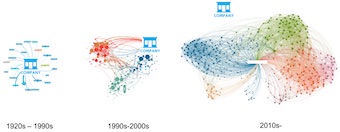
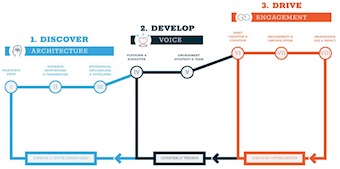
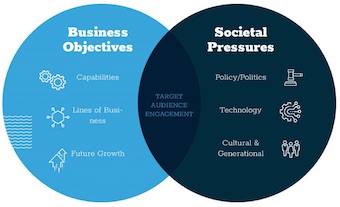
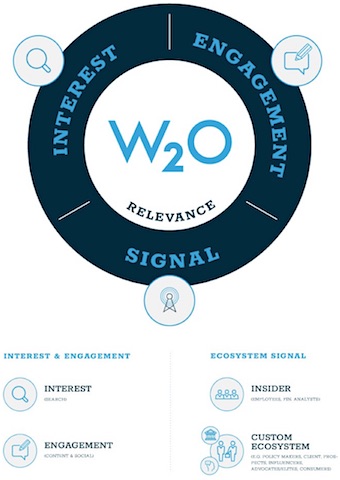
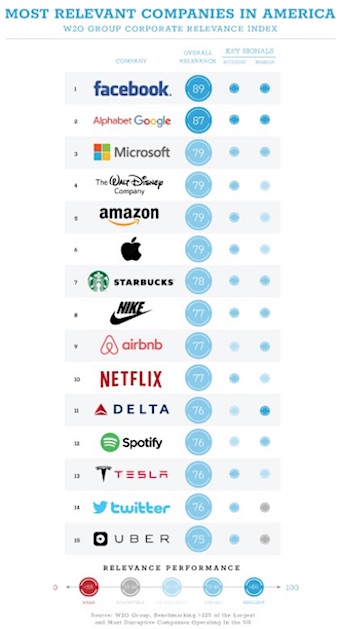

 Business leaders will face challenges in the upcoming year, some of which will come as a complete surprise, or beyond anyone's imagination.
Business leaders will face challenges in the upcoming year, some of which will come as a complete surprise, or beyond anyone's imagination. Teneo has hired Philipp Grontzki, who is a 20-year veteran of corporate communications and financial journalism, as a managing director in its strategy and communications group.
Teneo has hired Philipp Grontzki, who is a 20-year veteran of corporate communications and financial journalism, as a managing director in its strategy and communications group. Rowan Benecke, who co-founded Zeno Group and helmed Burson-Marsteller's tech practice, has joined McKinsey & Co as director of communications for North America.
Rowan Benecke, who co-founded Zeno Group and helmed Burson-Marsteller's tech practice, has joined McKinsey & Co as director of communications for North America. BCW has named Golin's Matt Coldagelli EVP and leader of its corporate affairs practice in Chicago.
BCW has named Golin's Matt Coldagelli EVP and leader of its corporate affairs practice in Chicago. Abby Bailey, who headed corporate communications for Fedex in its Middle East, India and Africa region, has joined Teneo as managing director in Dubai.
Abby Bailey, who headed corporate communications for Fedex in its Middle East, India and Africa region, has joined Teneo as managing director in Dubai.


 Have a comment? Send it to
Have a comment? Send it to 
No comments have been submitted for this story yet.